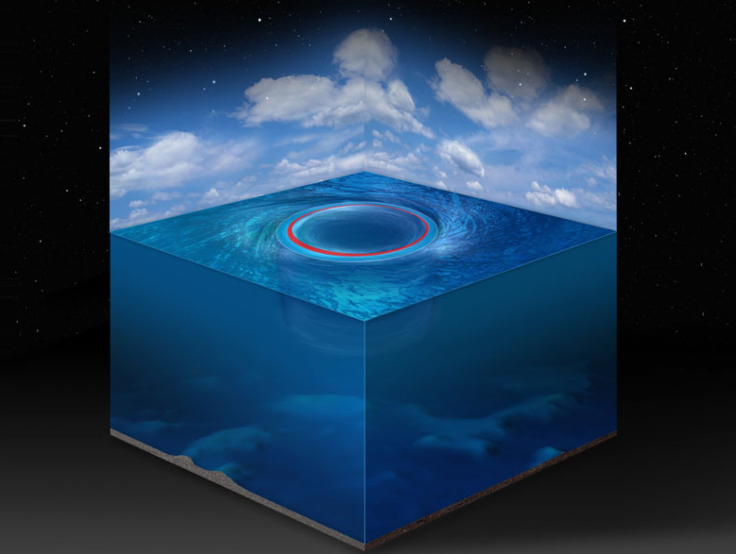Ocean Black Holes Defined By Mathematical Technique, Eddies Play ‘Mitigating Role In Climate Change’ [PHOTO]

Some of the world’s largest ocean eddies resemble black holes of space, according researchers from ETH Zurich and the University of Miami.
The eddies, or oceanic “black holes,” extend over 90 miles in diameter and drift across the ocean without letting anything caught in its path escape. While the boundaries of these swirling eddies have been previously undetectable, findings from a new study have shown they are mathematically equivalent to black holes.
”Mathematicians have been trying to understand such peculiarly coherent vortices in turbulent flows for a very long time,” study author George Haller, a professor of Nonlinear Dynamics at ETH Zurich, said in a statement.
In a paper published in the Journal of Fluid Mechanics, Haller along with Francisco Beron-Vera from the University of Miami developed a mathematical technique to define ocean black holes. They did so by isolating water islands in a turbulent ocean using satellite observations. These findings allowed the scientists to find closed barriers that contained fluid particles that moved around in circles -- much like the path of light in a photon sphere. Not only that, nothing can escape the eddies, including water.
Scientists say the ocean black holes contribute to climate change. Since most are found in the Southern Ocean where the Gulf Stream lies, they help transport warm and salty water northwards, making sea ice melt in a warming climate.
“Their transient nature gives them special significance in global circulation, and a potential mitigating role in climate change,” Haller said following a study outlining his findings in May.
The ocean “black holes” made headlines in August when satellite images caught the whirlpools in action in the South Atlantic Ocean. Described as “maelstroms,” the whirlpools were seen moving in a spiral motion trapping anything in its path including debris, oil and possibly living creatures.
They “create moving oases for the marine food chain or even impact climate change through their long-range transport of salinity and temperature,” the study states, showing that there are visual similarities between the eddies and black holes found in space.
And the whirlpools have a lifespan. “Ultimately, they all leak, but they can remain coherent up to a year or more, with a core that does not leak,” Haller said.
© Copyright IBTimes 2025. All rights reserved.




















